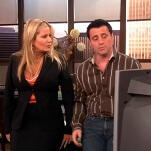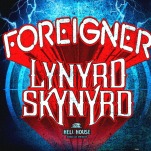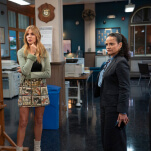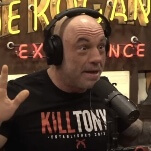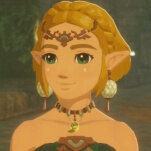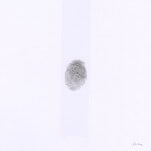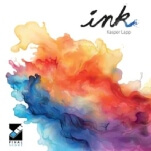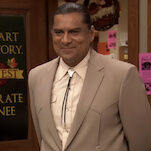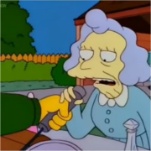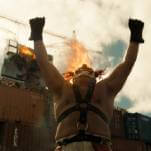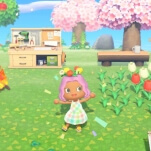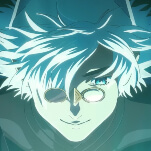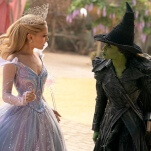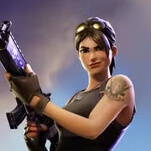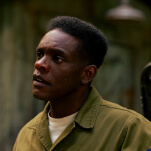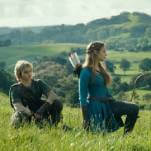With access to the internet and, in particular, crowdfunding websites, the “if you don’t like what’s being published, make your own comic” attitude has begun to change the momentum of the entire comic industry. Independent creators can fill niches left empty and make the kind of content they wish they saw more of. So, Beyond: The Queer Sci-Fi & Fantasy Comic Anthology (self-published) is one of many, and in great company, but it’s also one of the strongest and most readable anthologies available today.
As with any anthology, there’s not a lot of visual or tonal consistency between the stories, though there is a common thread between of love and acceptance. The pieces in Beyond vary widely in length, but they all feel tight and well-paced. Sfé R. Monster and Taneka Stotts, editor and assistant editor respectively, have gathered a talented group of people and managed their skills well.
Some of the stories are continuations of work readers can find elsewhere; in the case of Blue Delliquanti, “Optimal” is a standalone comic that fits into her excellent webcomic O Human Star but can be easily enjoyed by people unfamiliar with it. Monster’s own contribution, “The Dragon Slayer’s Son,” also seems like it could share a world with webcomic Eth’s Skin. Despite these connections to outside work, each of the comics is easy to read on its own, self contained and promising more at the same time. Several are crying out be explored more by their creators.
Of particular note is “O-Type Hypergiant” by Jon Cairns, a stunningly beautiful science-fiction comic with a lot of jargon-heavy text that builds a universe both fascinating and heart wrenching in unexpected ways. Savannah Horrocks and April J. Martins collaborated on “The Monster Queen,” a sweet and lovely story told entirely without dialogue with elegant, smooth art. “Of Families & Other Magical Objects” by Reed Black is by far the most lighthearted and funny of the comics, with a David Bowie joke that feels particularly poignant now.
Though the styles are all very different, all of the art in this book is strong, with none of the pages weaker or wanting compared to the others. The only real frustration is that the art is entirely in grayscale. As the book is self-published with crowdfunding, it’s understandable that Monster worked to keep costs low, but it would have been awesome to see just how rich and lush these stories would be in color. Particularly with the stunning full-color cover with foil accents by Levi Hastings, the grayscale feels a little flat. Make sure to take a look at the creator biographies in the back of the book: Many of the participants have other work listed that will take readers down an internet rabbit hole of even more excellent comics to read. [Caitlin Rosberg]
In the last few years, more comics operating in an exploitation/grindhouse milieu have emerged, books like
Operation Margarine,
Bitch Planet,
The Humans,
Terror Assaulter. Each of these books, hoping to meaningfully function in that pinku eiga space (as opposed to simply parodying or homaging it), has struggled to repurpose the trash cinema signifiers of yesteryear. Some have been quite successful, while others have failed to cross the border between a pastiche and a genuine continuation of the tradition. One such failure is Ryan Ferrier and Devaki Neogi’s
Curb Stomp (Boom Studios).
Concerned primarily with The Fever, a small girl gang in the Old Beach borough of some everycity, Curb Stomp drew comparisons to The Warriors when it was first serialized. After all, it featured similar settings, and the action in both is driven by inter-gang conflict, manufactured for nefarious purposes. This comparison is facile at best, and fails to articulate how and why The Warriors works and Curb Stomp doesn’t. The Warriors is a confident film in which bizarrely themed gangs occupy the world, and the 1970s’ New York slime and grime is overly pronounced. There is an authenticity, a brutality, a heart there; the look and feel of the world and action is a reflection of its context and not some carefully calculated nostalgia trading.
By comparison, Curb Stomp is a book where Faster, Pussycat! Kill! Kill! is invoked, with characters conspicuously singing Black Flag and Misfits songs. Hitting its overly familiar beats, it doesn’t engage these allusions beyond their surface. The familiar aesthetic of smart, creative people struggling against limited resources to reify their point-of-view is reduced to a kitschy second-order simulacrum. French Marxist Guy Debord was pessimistic about the treatment of subversive ideas—in texts like The Society Of The Spectacle, he writes about mainstream/status quo culture’s tendency to “recuperate” or reappropriate radical notions (think Che Guevara onesies). Here in Curb Stomp, we see that notion writ large.
There is a scene where a woman beats a man nearly to death because she doesn’t want to be called “bitch,” and the pervading ethos of the book is clear. Ferrier and Neogi are presenting a pat rejection of gendered pejoratives as the telos of subversion, as enough to be “punk.” Neogi loosely imitates the pop art/rock ’n’ roll aesthetic of Mike Allred, and colorist Jeremy Lawson slathers Neogi’s pages in wonderfully garish swaths of purple, pink, yellow. While the colors are pretty, the art team of Neogi and Lawson is never able to compose anything on the level of even something like God Told Me To. Ferrier similarly swipes plays from ’70s movies like Coffy and Switchblade Sisters, and both writer and artist invoke punk ephemera whenever possible. Characters are clothed in “punk” signifiers (liberty spikes, leather wrist bands, et al.), and exploitation films are obvious inspirations for everything from the characters to the plot to dialogue and narration. But Curb Stomp is a book where characters are afraid to curse, the violence is muted and bloodless, and there’s no sex to speak of. Here, everything is safe and gutless, sanitized and sterile. [Shea Hennum]
Valentine Gallardo’s
Soft Float (Space Face Books) rests comfortably in the reader’s hand. The soft white cover holds Gallardo’s deep graphite black with conviction. Her style is built on this kind of contrast, white figures emerging out of fuzzy and indistinct darkness, shapes cohering out of gestures. The short pieces that make up
Soft Float hang together by virtue of a shared preoccupation with the lives of young adults caught in the throes of awkward socializing. Everything is simultaneously lackadaisical and intense, just like every party.
All but one of these stories first appeared elsewhere, in various anthologies as well as vice.com. Her touchstones are familiar—the casual use of magic as a metaphor to encompasses (among other things) drug use and altered states of consciousness is a nod to Simon Hanselmann, even if her actual style is dissimilar—think more along the lines of Tove Jansson, with a smudge of Al Columbia. The direct reproduction of her pencil and graphite drawings lends the work a tactile lushness, every smear a supple detail. Although most of the book is in black and white, there are red highlights periodically, and the addition of color lends the work an occasionally startling dimensionality.
In “My Friend Winegum,” Winegum and her friend go to a costume party with three themes, “space,” “pop stars,” and “Labyrinth.” Winegum has a third eye on her forehead that tells her when the bored girls in the corner want to her “Wicked Game” by Chris Isaak. She also knows how to make a gin fizz. “Campfire Friends” tells the story of a group of friends on a camping trip who eat a magic spellwich that brings their memories to life. The problem is that you should never put a half-eaten spellwich in the refrigerator, or bad things happen—bad things in this case meaning being trapped in one another’s memories. “Keep It Real” is about the cat that follows you around and tells you the truths you don’t want to acknowledge: You’re bored and don’t feel like dancing with this guy, and you’d much rather go somewhere else and chat with your friend. The cat knows the score.
The climax of the book comes with “I Fly So Low,” which also marks Gallardo’s most striking use of color. It’s about falling in love with a guy named Mike. Emotion creeps over the body via streaks of red colored pencil, the same red colored pencil as Mike’s hair. Once spoken out loud, the emotion becomes real; suddenly the sensation dominates every waking moment. It’s embarrassing and this dependency creates shame. But then Mike breaks it off and it feels worse. Gallardo’s character wonders, “Sometimes you want nothing and you get nothing and you wonder: Why does it feel so bad?” Her lines appear to have been lifted from her heart directly to the page, without any filter. It’s all alive. [Tim O’Neil]
Comic books can take small, personal events and amplify their dramatic impact with strong visual choices, making them so well-suited for autobiographical material. Georgia Webber’s
Dumb #1 & 2 (Retrofit/Big Planet) is one of those small-scale, deeply personal stories, detailing the loss of Webber’s voice and the life changes she needed to enact to regain her vocal health. The first two issues have been reprinted in anticipation of Webber concluding her previously self-published series later this year, and these opening chapters draw the reader into Webber’s experience by finding clever ways to depict her pain and her inner conflict regarding what she needs to do to remedy it.
Color plays an important part in Webber’s story, and while the majority of the artwork is black-and-white, she uses a bright orange to represent speech. The word balloon borders are orange, but she’ll also draw scribbles of orange over an environment to indicate the volume of a space, an important detail when the main character is struggling to have her voice heard. Little stars represent Webber’s pain, first appearing individually around her neck, but gradually increasing in number. A small grouping of stars next to the register at Webber’s workplace is the first indicator that things are getting worse, and Webber’s breaking point is detailed with a two-page splash showing her in a huge bed of stars, grumbling the word “ouch.”
Silence becomes prevalent after Webber visits a doctor, and the second issue begins with a silent sequence of Webber heading home, presented with a nine-panel grid that builds tension as Webber quietly, slowly situates herself back at home. That sequence ends with a two-page splash of Webber crying at the side of her bed, a flurry of emotions reflected by a chaotic arrangement of word balloons and patterns indicating tears and confusion. From that point on, Webber is dedicated to making big changes to save her voice, but it’s still difficult for her to separate herself from speech, a struggle represented by Webber wrestling with her voice (an orange version of herself) across the top of the page for the rest of the issue. This dynamic visual element gives more energy to the story, which at this point involves Webber leaving her job, exploring disability job services, and raising her credit limit at the bank. It doesn’t sound particularly exciting, but Webber makes her story more dramatic through her artwork.
Described by Webber as a “multidisciplinary examination of voice,” Dumb #1 & 2 also features two voice-related essays: The first is a brief introduction to vocal health from voice coach Madeleine Palmer, the second an exploration of the skill and discipline required for heavy metal screaming by music writer Natalie Zina Walschots. These enlighten the story by giving readers a stronger understanding of the vocal instrument, providing information that fosters appreciation for vocalists, but also provides a basic framework for maintaining vocal health to avoid Webber’s trying situation. [Oliver Sava]

